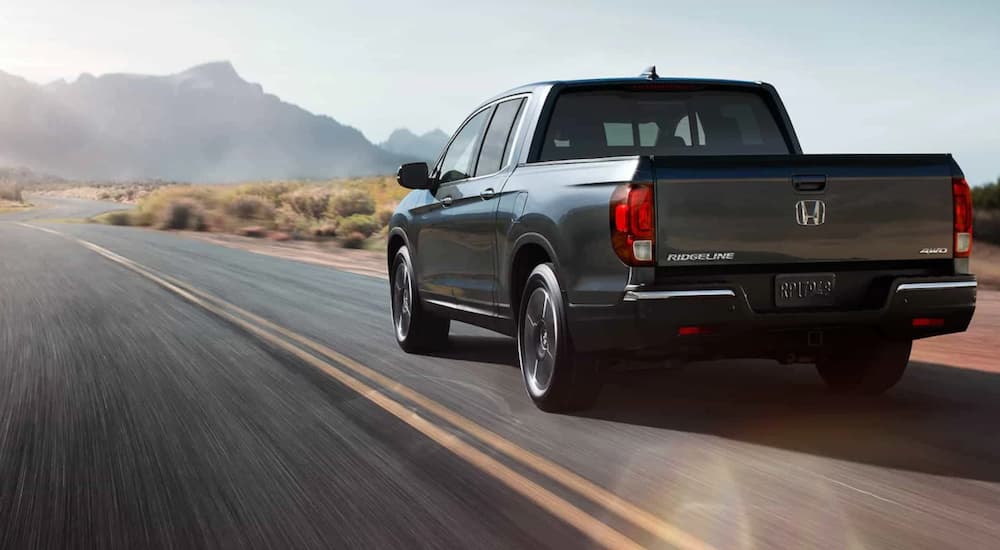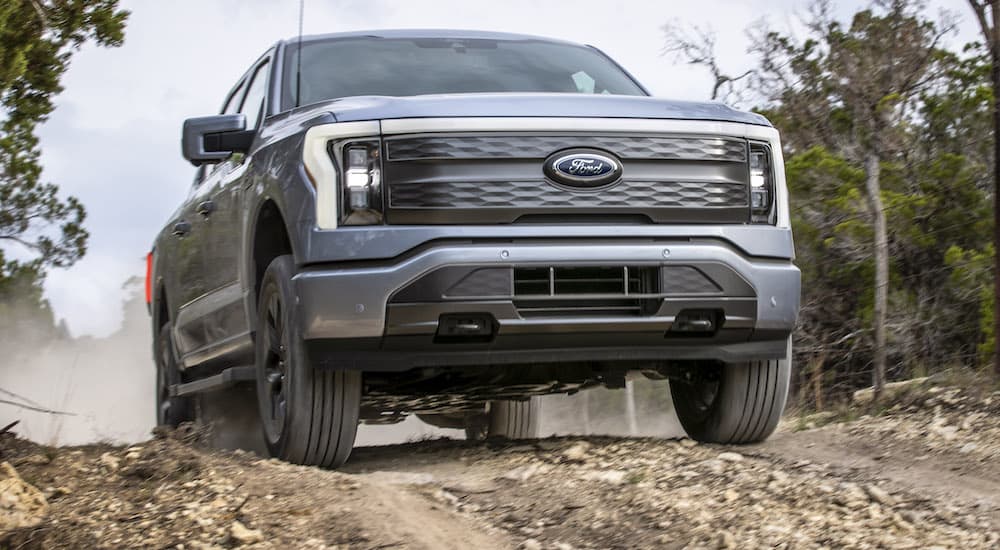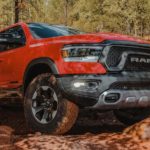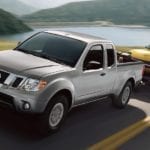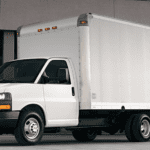Oscar Wilde once wrote, “Imitation is the sincerest form of flattery that mediocrity can pay to greatness.” These might be the truest words that the author of “The Picture of Dorian Gray” wrote. It might also be the only thing he wrote that can be quoted in an article about pickup trucks. However, looking at the history of the truck, his words ring true as you can see how the development of the pickup truck was one of influence and imitation. You can witness this for yourself when you stop into a used truck dealership and see how many of the recent pickup trucks on sale reflect features and styles from other models.
This cross-pollination evolved pickup trucks in ways unforeseen by those designing them at the time. These engineers, designers, and executives were looking to solve a fairly simple problem: how to give the most performance in a vehicle that was sturdy, rugged, reliable, and relatively fuel and cost-efficient. The results came in so many different versions that it’s no wonder there are so many styles of trucks on the road today.
#1. The Ford Model TT
There are few things more influential than being first, which is especially true in the case of the pickup truck. Most folks agree that Ford got there first with the Model TT in 1917, a two-person semi-enclosed vehicle with a flatbed behind it. This rudimentary design got things started, and true to Oscar Wilde’s prediction, Chevrolet followed a year later with the One-Ton, which had an open bench seat for the driver and a passenger, with an eight-post curtain top available to keep you and your things dry in case of rain. Ford pushed things forward a decade later in 1925 with the Model T Roadster equipped with a pickup body, which was the first to enclose the payload bed in the rear of the truck.
#2. The Ford F-Series
Debuting in 1948, the Ford F-Series was actually a series of 8 different trucks, starting with the F-1, which weighed a half ton. The largest was the F-8, which was given the nickname “Big Job” since it was intended for commercial purposes. The F-Series was built on the know-how developed by Ford during World War II, and it sparked a revolution in truck building, spurring rivals General Motors and Chrysler to begin building their own trucks. This rivalry continues to this day with the Ford F-150, Chevy Silverado 1500 (General Motors), and Ram 1500 (Stelantis, which encompasses Chrysler brands) vying each year for the most popular truck on the road.
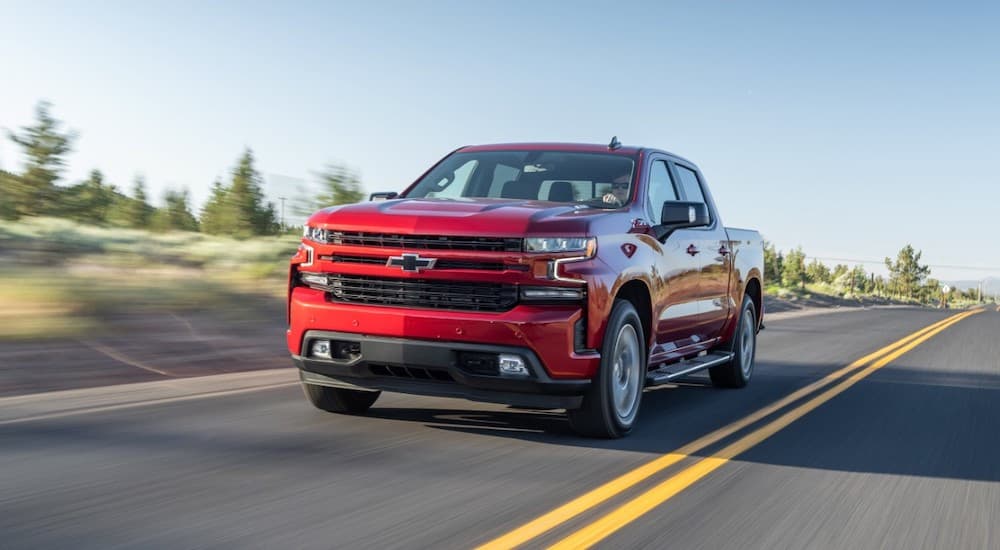
#3. The Chevy Silverado 1500
Introduced in 1999, the Chevy Silverado 1500 began its life as the top trim level on the 1975 Chevy truck models. In keeping with the tradition of styling and creature comforts associated with the name Silverado, this truck started a trend of trucks for personal use that has led to many families choosing a pickup as the vehicle of choice. Helping this along was the decision to offer cab styles that provide two rows of seats with full-size doors, often called the Crew Cab, depending on the manufacturer. This also started a trend toward luxury trucks with leather seats, premium audio systems, and advanced safety features, showing that the automakers were designing trucks to appeal to suburban families, as well as commercial drivers.
#4. The Ram 1500, 2500, 3500
This was not really a truck, as much a corporate decision. Since the 1930s, Dodge had used the Ram as the hood ornament on its trucks, which morphed into the Dodge Ram truck in the 1980s. However, as trucks became more popular, a decision was made in 2009 at Fiat Chrysler to split Dodge Ram into two brands. Dodge would continue offering performance SUVs and muscle cars, while a new company called Ram would focus solely on pickup trucks. If anything, it signaled the importance of the pickup truck, with the renamed Ram 1500, 2500, and 3500 marking the debut of the Ram brand, continuing as a dominating force in the truck market.
#5. The Honda Ridgeline
Midsize pickups have been around for a long time, with some pointing to the 1958 Datsun 1000 pickup produced by Nissan as its origin. However, midsize pickups had always been the stepchild of the larger full-size and heavy-duty pickup trucks. That all changed in 2006 when Honda introduced the Ridgeline. It featured a unibody design giving it improved performance like a sedan, but the capability of towing up to 5,000 lbs, like a larger truck. This prompted Chevy to improve its Colorado midsize pickup, while Ford opted to bring back the Ranger in 2019 as a midsize truck, abandoning its less popular compact size.
#6. The Jeep Gladiator
The revival of a model from the 60s, the Jeep Gladiator is a standard 4×4 midsize truck designed to appeal to off-road enthusiasts, taking the capabilities of a Jeep Wrangler Unlimited with its two rows of seats and adding a payload bed. As a result, drivers got a versatile vehicle that could be used for light commercial work during the week and then hit the trails on the weekend, kicking off an off-road revolution. Other truck makers followed with purpose-built off-road midsize models, with two of the most advanced being the Chevy ZR2 Bison and the Ford Ranger Raptor, but the original Gladiator was the first.
#7. The Nissan Titan XD
The leading truck builders have been offering heavy-duty models since the 40s, but these models were always fairly utilitarian in design. The goal of each heavy-duty model, whether a Ford F-350 or a Chevy C/K 3500, was to build a truck to carry the heaviest loads and tow the largest trailers. When Nissan introduced the Titan XD in 2016, it started a revolution in heavy-duty trucks. Here was a heavy-duty truck modeled on a popular midsize truck model, but with the passenger comfort features rarely seen in a truck of its size and capability. Today, drivers who choose a heavy-duty truck don’t have to compromise on comfort, thanks to the Titan XD.
#8. The Toyota Tundra
Pushing the envelope in performance is one way automakers hope to stand out from a crowded field. This is especially the case with pickup trucks, whose drivers can be very discerning. This is why Toyota enlisted the help of the Toyota Racing Development (TRD) team in 2004 to design a truck that would go on to win the NASCAR Craftsman Truck Series every year from 2006 to 2010. Toyota was able to give the Tundra power unseen in a full-size pickup truck, which is why so many drivers who want a truck with exceptional acceleration choose a Toyota Tundra TRD Pro model. Other automakers like Ford have become intrigued with this, leading to the development of the 2023 Ford F-150 Raptor, a performance pickup designed to challenge the Toyota Tundra TRD Pro. The real winner here is the driver who wants a truck with sports car capabilities.
#9. The Rise of Electric Pickups
Battery electric trucks always sounded like the stuff of science fiction. Sure, you could build a sports car, sedan, or SUV powered solely on battery power, but a battery electric vehicle (BEV) truck sounded ridiculous to many. Well, the ones laughing are the people who signed up for a Ford F-150 Lightning and a Chevy Silverado EV. These two fully electric trucks give you instant torque, leading to exceptional acceleration, rivaling their gas-powered competition. You also get incredible range on a full charge of their batteries, freedom from the gas pump, and towing and hauling capabilities comparable to those provided by conventional full-size trucks. Be on the lookout for other manufacturers to begin offering more hybrid and BEV options on their trucks. The electric revolution is here.
#10. The Chevy El Camino
Is it a sedan or a truck? Well, the Chevy El Camino is a little of both. Introduced in 1958, this car-truck hybrid is now considered a classic, with models in near-mint condition drawing high bids at auto auctions like Barrett Jackson. However, Ford got their first with the Ford Ranchero, which had been on the market for two years before the El Camino hit the road. Nevertheless, the Chevy El Camino seemed to get the balance right with sedan comforts, ride, and handling, with the hauling capabilities provided by a pickup truck payload bed instead of a trunk.
Chevy stopped building the El Camino in 1987; however, its influence is still being felt. For example, Cadillac offered a payload bed on some early models of the Escalade. Two automakers also recently introduced models that seem to have been inspired by the classic El Camino. The Hyundai Santa Cruz is described as a sport adventure vehicle but has the unmistakable look of a compact truck modeled on an SUV body, while the Ford Maverick is a compact truck with a standard hybrid, with aspirations to restart the craze started by the Chevy El Camino…or was it the Ford Ranchero?
The Pickup Truck Evolution Continues…
Trucks are more popular than ever, with so many automakers offering at least one model with the ubiquitous payload bed of a pickup. We have seen trucks get more capability, improved creature comforts, and even electric power. It will be interesting to see where the industry goes next in the world of the pickup truck; for now, we can enjoy driving both new and used trucks that represent the legacy of this competitive automotive innovation.
